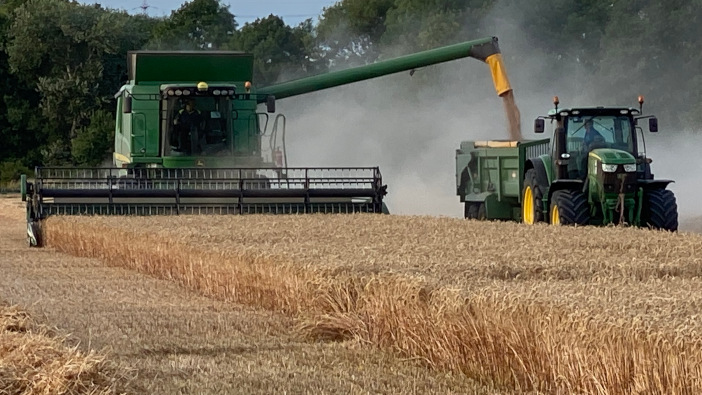Limagrain’s biscuit wheat LG Astronomer has reportedly performed well for GH Hoyles Ltd, based in Long Sutton, Lincolnshire. David Hoyles said that he was very pleased with the late-September drilled crop.
Two fields were harvested on the 27th and 28th of July, yielding between 13.2 and 13.4 tonnes per hectare and combined at between 13.3% and 13.6% moisture. This is compared to a five-year average of 11.6 tonnes per hectare.
“This does include two lower yielding seasons where we had very wet autumns and lower levels of radiation in the spring,” pointed out Mr Hoyles.
Both fields followed vining peas and were established with a minimum tillage system, before drilling in late September.
“We had very little disease at the beginning of the season, so skipped the T0. It was wet in April so the T1 was more robust, containing Revystar (47.5 g/l fluxapyroxad and 100 g/l mefentrifluconazole), Arizona (folpet) and a good dose of PGR,” he said.
It was dry again by T2 so only Firefly (10g/l prothioconazole and 45 g/l fluoxastrobin) and boron were applied. “An earlier than normal T3 at the end of May (T3 usually goes on in the second week of June), consisted of Uinvoq (50g/L fenpicoxamid &100 g/l prothioconazole) & boron.
“We didn’t have any issues with Septoria, which we know was a concern with some of the Group 3’s last year. As Astronomer is tall, we ensured the PGR programme was robust, and consequently had no problems with lodging.
“We were disappointed that we didn’t have as much soil N after the vining peas as we had hoped for, which meant the crop received a total of 160kg N/ha which was applied in the seedbed, and three follow up applications.”


